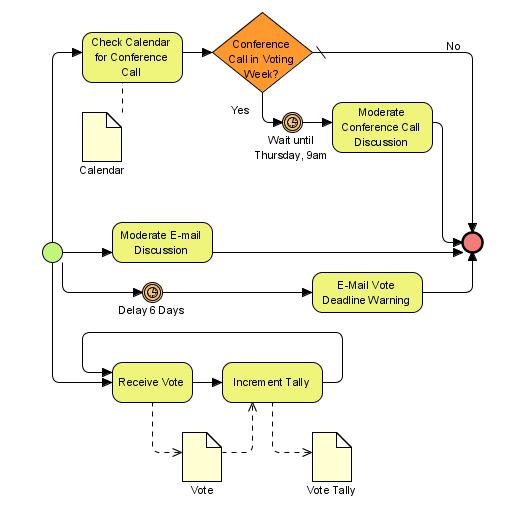

When Participants are added, they are added to both the top and bottom in an alternating fashion. The optional message item changes depending on whether it is a initiating or receiving participant. There can only be one initiating participant but there can be one or many receiving participants.

The lighter participant brand is the party that initiates the conversation while the darker band designates the parties that receive/respond to the conversation. A Choreography, meanwhile, focuses on the sequential exchange of information (Message Flows) between multiple participants.Īs mentioned above, a Choreography may appear in a Collaboration diagram.Įrror creating thumbnail: File missing Choreography Diagram Elements While similar to a normal Business Process, a choreography exists outside of or in between participants or pools while a normal Process exists within a single pool and illustrates the tasks of a specific object. As part of this diagram, a Choreography may appear between the pools as they intersect the Message Flows.Ĭhoreography allows you to indicate tasks that include multiple participants in order to complete that task. Black Box pools can contain a process not owned by the group responsible for the other pool, hence why the process is not displayed.Ĭommunication between two different pools or objects within a pool is handled by Message Flows. Pools containing activities are known as "White Box" while pools with no activities in them are "Black Box," indicating that all details are hidden. Note that a pool may not contain any activities or can itself contain an individual process. Each pool in a Collaboration represents a participant, such as a person, role, or system. Collaborations are easily identified because they contain two or more pools.

The following example of a Business Process diagram shows the interaction between a customer applying for a loan and the bank/lender.Ĭollaborations show the relationship and interactions between multiple processes that may be owned by different parts of an organization. The result is having an easy-to-understand mechanism for creating business process models which produce complex business processes. For example, activities are rectangles and decisions are diamonds. A Business Process Model is a visual representation of the flow of activities and their order of performance using a set of graphical elements that use shapes familiar to most modelers and business users.


 0 kommentar(er)
0 kommentar(er)
